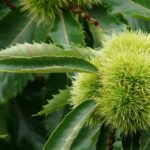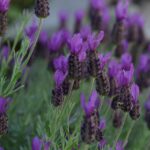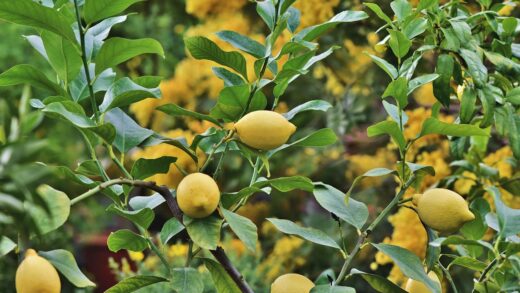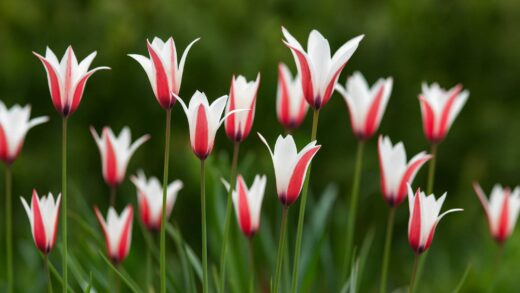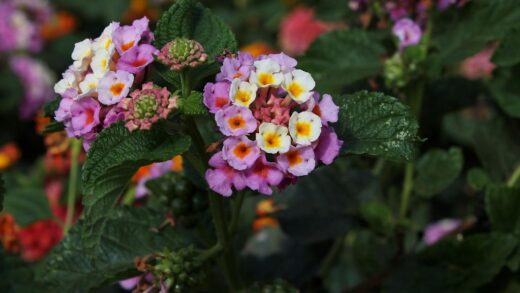While the fernleaf peony is a relatively robust and resilient plant, it is not entirely immune to problems and can occasionally fall victim to certain fungal diseases and pests. Proactive management and good cultural practices are the most effective strategies for keeping your plant healthy and minimizing the risk of infestations or infections. By creating an environment that promotes plant vigor and discourages pathogens, you can often prevent issues before they start. Prompt identification and treatment are key to managing any problems that do arise, ensuring they do not cause significant damage to this treasured garden specimen.
The most common and significant disease to affect all types of peonies, including the fernleaf peony, is botrytis blight. This fungal disease, caused by the pathogen Botrytis paeoniae, thrives in cool, damp, and humid conditions, which are often prevalent in the spring. The first signs of infection are often young shoots that suddenly wilt, turn black, and die back to the ground. You may also notice large, dark, water-soaked spots on the leaves, stems, and flower buds. A fuzzy gray mold may develop on the affected tissues during periods of high humidity.
Good garden hygiene is the number one defense against botrytis blight. The fungus overwinters on infected plant debris, so it is absolutely essential to practice meticulous sanitation. In the autumn, after the foliage has died back, you must cut all the stems down to ground level and remove them, along with any fallen leaves, from the garden bed. This material should be burned or disposed of in the trash, not added to your compost pile, as the fungal spores can survive and re-infect the area the following spring.
Ensuring proper air circulation around the plant is another critical preventative measure. Avoid planting your fernleaf peony in a crowded location where air movement is restricted. Spacing plants appropriately allows the foliage to dry out quickly after rain or dew, making it much more difficult for the fungal spores to germinate and infect the plant. Watering at the base of the plant using a soaker hose, rather than overhead sprinklers, also helps to keep the leaves and flowers dry and less susceptible to infection.
Other fungal concerns
Besides botrytis blight, fernleaf peonies can be susceptible to a few other fungal diseases, most notably powdery mildew. This disease typically appears later in the season, during warmer and more humid weather. It is easily identifiable by the characteristic white, powdery coating that forms on the surface of the leaves. While it is generally not as destructive as botrytis and is often more of a cosmetic issue, a severe infection can stress the plant by interfering with photosynthesis.
More articles on this topic
As with botrytis, good air circulation is a key factor in preventing powdery mildew. If the disease becomes a persistent problem, you may need to consider thinning out some of the stems or pruning nearby plants to improve airflow. Fungicidal sprays can be used to manage powdery mildew, with options ranging from horticultural oils and sulfur-based fungicides to biological fungicides. It is best to apply these treatments at the first sign of the disease and repeat as necessary according to the product instructions.
Leaf blotch, also known as red spot or measles, is another fungal issue that can affect peonies. This disease causes distinct, glossy, reddish-purple spots to appear on the upper surface of the leaves in the spring. As the season progresses, these spots enlarge and may merge, turning a dull brownish-purple. While it can look alarming, leaf blotch is typically not a serious threat to the overall health of the plant.
The management strategy for leaf blotch is the same as for botrytis blight: diligent autumn cleanup. Removing and destroying all the old foliage at the end of the season is the most effective way to reduce the amount of fungal inoculum that can survive the winter and re-infect the plant the following year. Maintaining good cultural practices, including proper spacing and watering, will help to keep the plant vigorous and better able to withstand minor foliar diseases.
Common insect pests
The fernleaf peony is fortunate in that it is not bothered by a large number of insect pests. However, there are a few that can occasionally cause problems. Ants are frequently seen on peony buds, and this often causes alarm for gardeners. It is important to understand that the ants are not harming the plant; they are simply attracted to the sugary nectar that the flower buds excrete. This is a natural symbiotic relationship, and there is no need to take any action to control the ants.
More articles on this topic
Thrips are tiny, slender insects that can sometimes cause damage to the flowers. They feed by scraping the surface of the flower petals and sucking up the plant juices, which can lead to distorted or discolored blooms and brown-edged petals. In a severe infestation, the flower buds may even fail to open at all. To check for thrips, you can shake a flower blossom over a white piece of paper and look for the tiny, fast-moving insects. Insecticidal soap can be effective in controlling thrips, but it must be applied thoroughly, making sure to get it into the flower buds where they hide.
Scale insects are another potential pest, although they are less common on peonies. These insects attach themselves to the stems and the undersides of leaves, covering themselves with a waxy, protective coating. They feed by sucking sap from the plant, and a heavy infestation can weaken the plant and cause yellowing of the leaves. Scale can be difficult to control because their waxy covering protects them from many contact insecticides. Horticultural oil applied during the dormant season can be very effective at smothering the overwintering insects.
In general, maintaining a healthy and vigorous plant is the best defense against insect pests. Stressed plants are often more susceptible to attack. Encourage beneficial insects in your garden, such as ladybugs and lacewings, which are natural predators of many common pests. By fostering a balanced ecosystem, you can often keep pest populations in check without resorting to chemical controls.
Preventing root and crown rot
Root and crown rot are not caused by a pest or a foliar disease, but by soil-borne fungi and water molds that attack the base and underground parts of the plant. This is perhaps the most serious and fatal issue that can affect a fernleaf peony, and it is almost always linked to poor growing conditions. The primary cause is soil that remains waterlogged due to poor drainage or excessive watering, creating the anaerobic environment in which these pathogens thrive.
The symptoms of root rot can be deceptive. The plant may appear wilted, stunted, or have yellowing leaves, which might lead a gardener to think it needs more water. However, upon inspection of the base of the plant, the stems will often be dark, soft, and mushy. If you were to dig up the plant, the roots would be brown or black, soft, and would easily pull apart, instead of being firm and cream-colored. By the time these symptoms are obvious, it is often too late to save the plant.
Prevention is the only effective strategy for dealing with root and crown rot. It all starts with site selection and soil preparation. You must plant your fernleaf peony in a location with excellent drainage. If you have heavy clay soil, you must amend it heavily with organic matter to improve its structure, or better yet, plant the peony in a raised bed where you have complete control over the soil medium.
Proper watering habits are the other critical component of prevention. As has been emphasized, the fernleaf peony requires very little water during its summer dormancy. You must allow the soil to dry out between waterings and never let the plant sit in soggy soil. Additionally, when planting, ensure that the crown is not buried too deeply. Planting at the correct shallow depth helps to keep the crown, the most vulnerable part of the plant, drier and less susceptible to rot.
Nematodes and other concerns
Nematodes are microscopic roundworms that live in the soil. While many species are beneficial, some are plant-parasitic and can cause significant damage to the roots of peonies. Root-knot nematodes are the most common culprits. They infest the roots, causing the formation of galls or “knots” that hinder the root’s ability to absorb water and nutrients. This results in a plant that appears stunted, wilted, and generally fails to thrive, even with good care.
Diagnosing a nematode problem can be difficult without digging up the plant to inspect the roots for the characteristic galls. If nematodes are confirmed, management is challenging. There are no chemical controls available to home gardeners that can eliminate them from the soil. The best course of action is to remove and destroy the infested plant and the surrounding soil. You should not replant peonies or other susceptible plants in that same location.
Solarization can be an effective method for reducing nematode populations in an infected garden bed. This involves tilling the soil, watering it deeply, and then covering it with clear plastic for 4 to 6 weeks during the hottest part of the summer. The trapped heat can raise the soil temperature to levels that are lethal to many nematodes and other soil-borne pathogens.
Fortunately, significant pest and disease problems are not the norm for well-cared-for fernleaf peonies. By focusing on the fundamentals of good culture—providing the right location with full sun, ensuring excellent drainage, promoting good air circulation, and practicing diligent autumn sanitation—you create an environment where your plant will be healthy and vigorous. A strong plant is its own best defense against the various challenges it might face in the garden.







